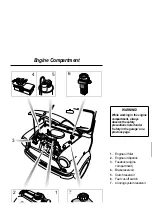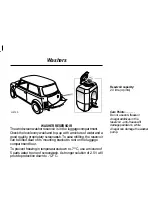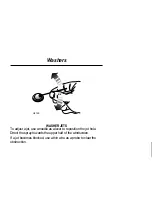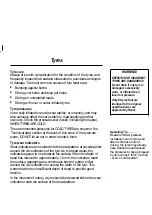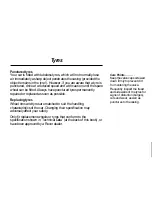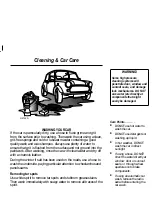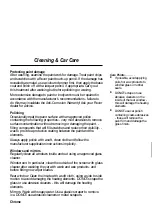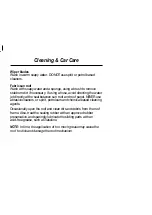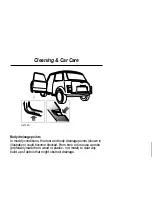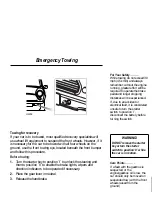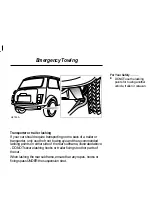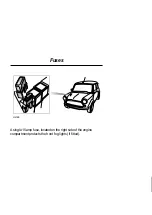
Tyres
62
Tyre care
Always drive with consideration for the condition of the tyres, and
frequently inspect the tread and side walls for punctures and signs
of damage. The most common causes of tyre failure are:
•
Bumping against kerbs.
•
Driving over kerbs and deep pot holes.
•
Driving on unmetalled roads.
•
Driving with over or under-inflated tyres.
Tyre pressures
Incorrectly inflated tyres will wear rapidly, or unevenly, and may
also seriously affect the car’s stability, road handling and fuel
economy. Check the pressures every week (including the spare),
WHEN TYRES ARE COLD.
The recommended pressures for COLD TYRES are shown in the
’Technical data’ section at the back of this book. If the tyres are
warm, DO NOT let air out in order to match them.
Tyre wear indicators
Wear indicators are moulded into the tread pattern at several points
around the circumference of the tyre. As the tread wears, the
indicators appear to rise towards the surface. When the depth of
tread has reduced to approximately 1.6 mm, the indicators reach
the surface, appearing as a continuous band of rubber, either
around the circumference or across the width of the tyre. This
warns that there is insufficient depth of tread to provide good
traction.
In the interests of safety, a tyre should be renewed before the wear
indicators reach the surface of the tread pattern.
WARNING!
DEFECTIVE OR INCORRECT
TYRES ARE DANGEROUS!
Do not drive if any tyre is
damaged, excessively
worn, or inflated to an
incorrect pressure.
Only fit tyres that are
identical to the original
specification or are
approved by Rover.
Operating Tip ..........
Be aware that air pressure
increases in warm tyres, and
after as little as a mile of
driving, the tyres may already
have warmed up and caused
the pressures to have increased
by as much as 6 lbf/in
2
(0.4 bar)
- even in cold weather!




